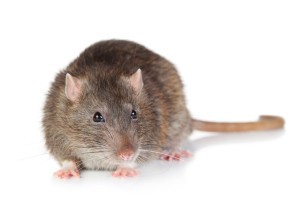by Roberta Murphy

Well, the rats may or may not be IN your Carlsbad home, but chances are good if you have a vegetable garden, bird feeder or other source of food outdoors, rats will be regular nocturnal visitors. And if there is an opening to your attic or garage, you may well have rats in your home.
So how to get rid of these pests, which are likely either burrowing brown Norway rats, or smaller black roof rats with very long tails?
It’s a problem we encounter fairly regularly in our La Costa real estate practice. We love our organic gardens, our lovely bird feeders and kindly put water bowls out for our four-legged friends. And are inviting visits from unwelcome guests.
Some clients are abandoning gardens, which are easy targets for night foraging. Others give up on feeding birds. And we all know to never, ever leave any type of food outdoors overnight.
So how to keep our Carlsbad gardens and eliminate the rat problem?
We recently offered some solutions at our mother site, SanDiegoPreviews:
First of all, NEVER use poisonous bait. It’s not only a cruel solution, but one that can endanger the lives of pets and other wildlife. A cat, dog, bird or other critter that ingests any part of a poisoned rat or mouse could likewise be poisoned or be easily attracted to the bait itself.
Ditto for owls, possums and other natural rat predators. I am also not a fan of glue traps because the mouse or rat is left alive and struggling and YOU are left to deal with the situation.
The best solution is to use the old fashioned snap traps that are properly loaded with food–which will insure a very quick and relatively painless death. Just be sure the loaded traps are placed out of reach for pets and birds. A great place is in attics, in hidden spots parallel to your homes foundation and perhaps buried in vegetations.
Further excellent research can be found via UC Davis research. Included therein:
Trapping is the safest and most effective method for controlling rats in and around homes. Snap traps with large plastic treadles are especially effective. Nut meats & dried fruit make good bait that pets won’t want. Fasten the bait securely to the trigger of the trap with light string, thread, or fine wire so the rodent will spring the trap when attempting to remove the food. Even glue can be used to secure the bait to the trigger. Soft baits such as peanut butter and cheese can be used, but rats sometimes take soft baits without setting off the trap (and this has happened to me often). Set traps so the trigger is sensitive and will spring easily. Place traps in natural travel ways, such as along walls, so the rodents will pass directly over the trigger of the trap.
Dispose of dead rodents as quickly as possible by burying them or by placing them in a sealed plastic bag and putting them in the trash. Do not handle them with bare hands.
Use as many traps as possible so trapping time will be short and decisive. A dozen or more rat traps for a heavily infested home may be necessary. Place traps about 10 to 20 feet apart. If a rat sets off a trap without getting caught, it will be very difficult to catch the rat with a trap again. To reduce the likelihood of “trap shyness,” one excellent strategy is to leave traps baited but unset until the bait has been taken overnight. To avoid using too few traps, if bait it taken from all traps, double the number of baited traps exposed, and keep doing so until some traps remain with bait untaken; then bait and set all traps.
